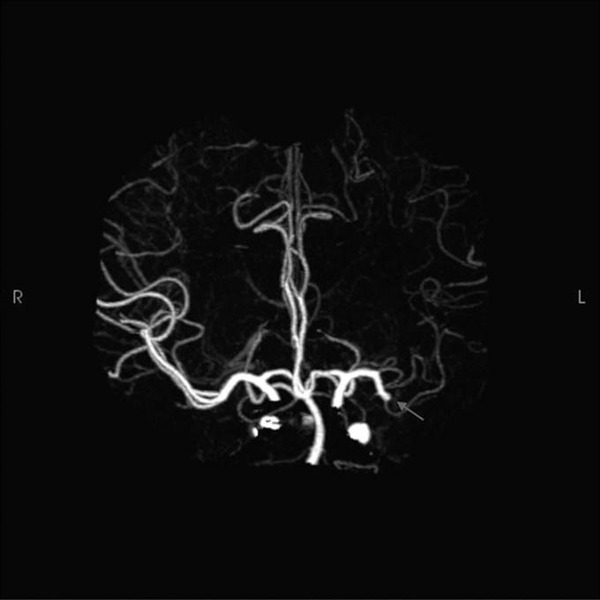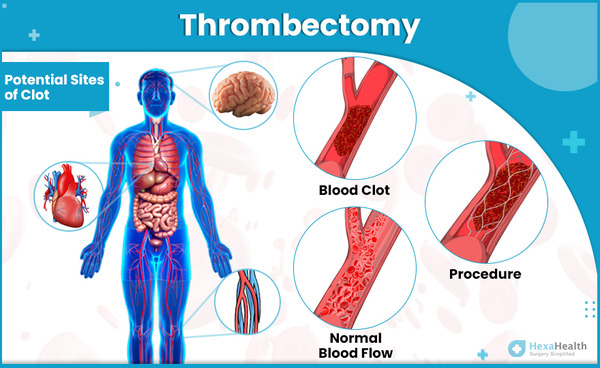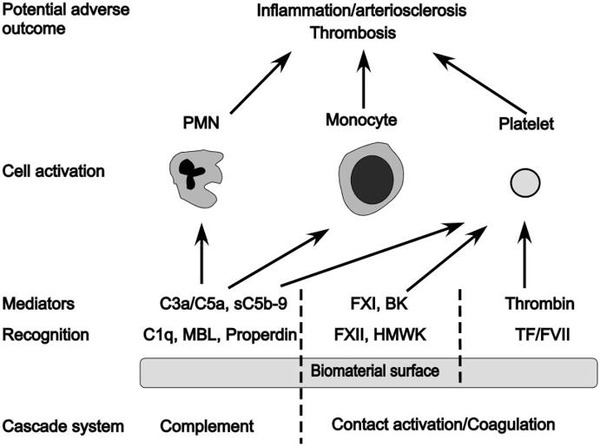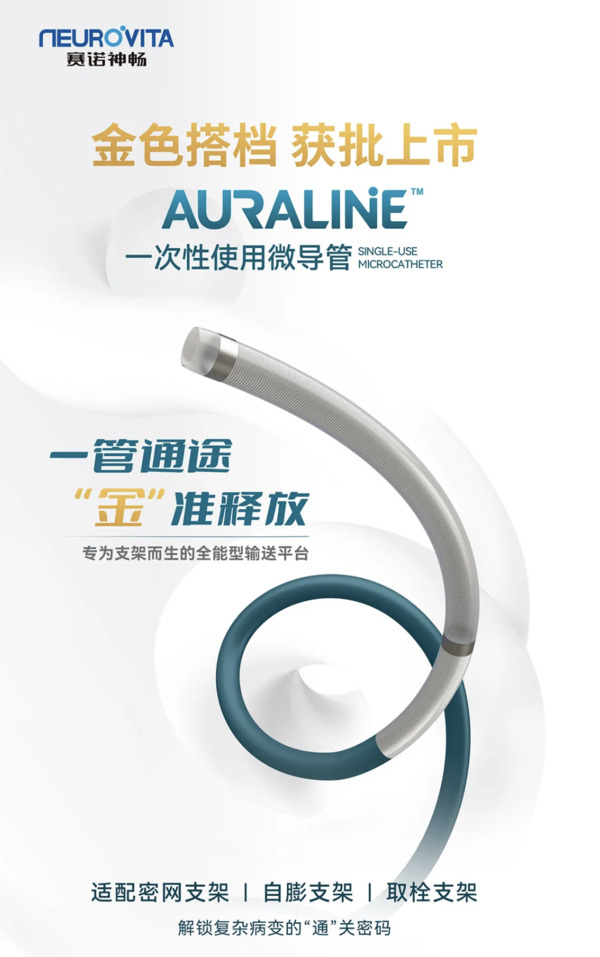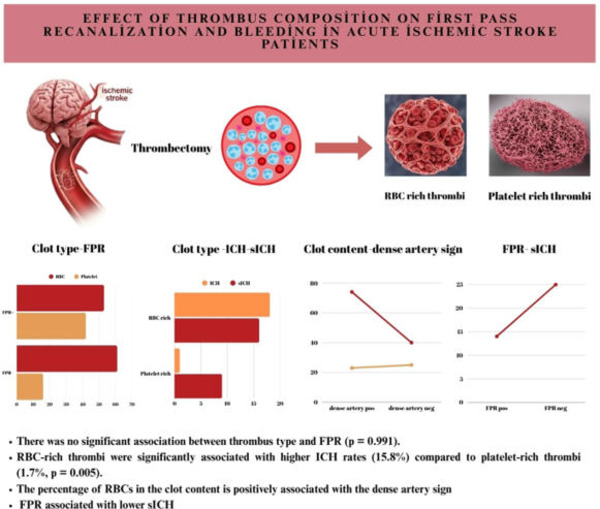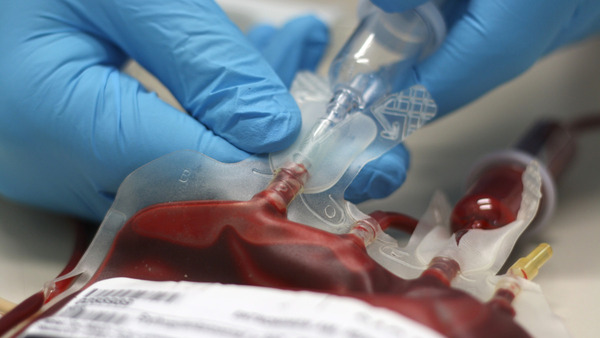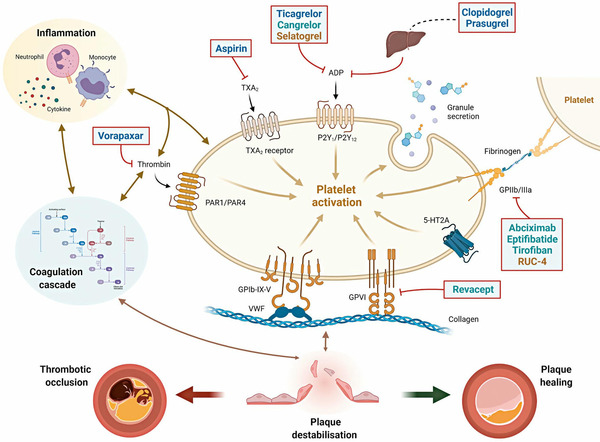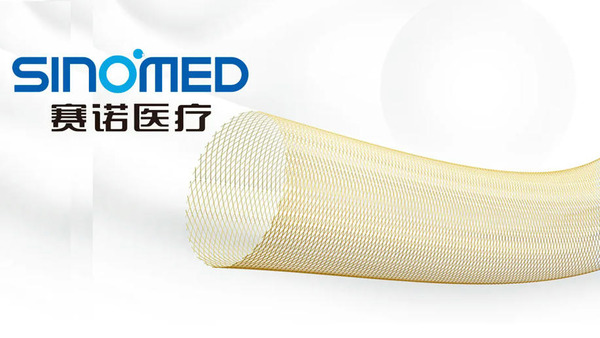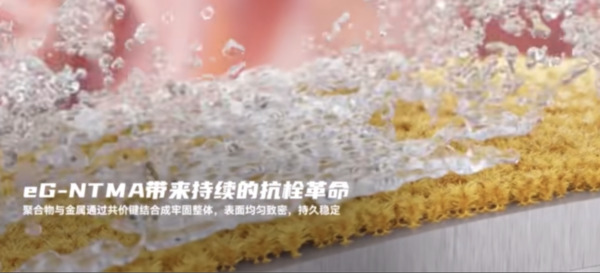 Your new post is loading...

|
Scooped by
Beeyond
November 20, 9:29 AM
|
Flow diversion is a transformative approach in neurointerventional surgery for intracranial aneurysms that relies heavily on effective antiplatelet therapy. The ideal approach, including the timing of treatment, the use of dual antiplatelet therapy (DAPT), and the number of flow-diverter devices to use, remains unknown. DAPT, which combines aspirin with a thienopyridine like clopidogrel, prasugrel, or ticagrelor, is the standard regimen, balancing thromboembolic protection and hemorrhagic risk. The variable response to clopidogrel, influenced by genetic polymorphisms, necessitates personalized treatment strategies. Alternatives like prasugrel and ticagrelor provide superior efficacy in specific scenarios but require careful consideration of bleeding risks and costs.

|
Scooped by
Beeyond
November 20, 9:25 AM
|
Despite growing evidence supporting the success of DAPT in reducing thromboembolic events, the lack of consensus on optimal regimens, doses, and duration is evident. Factors contributing to this variability include genetic polymorphisms affecting treatment response and ongoing debates regarding the clinical significance of hemorrhagic complications associated with DAPT.

|
Scooped by
Beeyond
November 10, 3:27 AM
|
The Chinese ANGEL-COAST randomized trial compared two different techniques used for endovascular thrombectomy — either contact aspiration or stent retriever — in patients with basilar artery occlusion stroke. Results showed that using contact aspiration on the first attempt at clot removal achieved higher initial reperfusion rates without increasing the risk for symptomatic intracerebral hemorrhage or periprocedural complications.

|
Scooped by
Beeyond
November 3, 4:20 AM
|
Intra-arterial (IA) alteplase was associated with superior 90-day functional outcomes than standard therapy alone in Chinese patients with large-vessel occlusion (LVO) stroke who had achieved successful endovascular reperfusion, new research showed.

|
Scooped by
Beeyond
November 3, 4:18 AM
|
A new individual patient-level data meta-analysis has shown “overwhelming benefit” of endovascular thrombectomy (EVT) in a wide spectrum of patients with large-core strokes. The ATLAS meta-analysis showed consistent improvements in functional independence and independent ambulation and reduced mortality with EVT compared with best medical management alone. The treatment benefit of EVT was maintained across key clinical and imaging subgroups, regardless of age, sex, clinical severity, time to treatment, stroke size, and mismatch profile.

|
Scooped by
Beeyond
November 3, 4:16 AM
|
In patients with vertebrobasilar artery occlusion (VBAO) stroke undergoing mechanical thrombectomy, first-line contact aspiration appears to produce a greater first-pass effect (FPE) compared to a stent retriever-only approach. However, stent retriever-first techniques may yield better final reperfusion rates, resulting in no significant difference in overall clinical outcomes between the two. As such, researchers believe that technique selection based on the underlying occlusion aetiology may be critical, and further analyses are warranted to clarify this relationship.

|
Scooped by
Beeyond
November 1, 12:37 PM
|
Protembis was founded in 2013 and is headquartered in Aachen, Germany. The company develops innovative technologies to reduce the risk of new brain injury during cardiology procedures particularly in connection with transcatheter aortic valve replacement (TAVR).

|
Scooped by
Beeyond
October 27, 7:55 AM
|
An aneurysm is a problem of the blood vessel wall, where they bulge abnormally. Aneurysms can be asymptomatic, whereas some aneurysms can result in life-threatening risks when they rupture. As with time, science and Technology are improving; with the revolution in advancements in neuro-interventional radiology, this aneurysm can be treated with minimally invasive approaches. Of these, aneurysm coiling has become a suitable, effective standard procedure. IRFacilities provides this advanced technique with safe aneurysm endovascular interventions and optimum effective patient results.

|
Scooped by
Beeyond
October 20, 7:09 AM
|
Stroke mortality has been declining over the past 6 decades, and as a result, stroke has fallen from the second to the fifth leading cause of death in the United States. This trend may follow recent advances in the management of stroke, which highlight the importance of early recognition and early revascularization. Recent studies have shown that early recognition, emergency interventional treatment of acute ischemic stroke, and treatment in dedicated stroke centers can significantly reduce stroke-related morbidity and mortality. However, stroke remains the second leading cause of death worldwide and the number one cause for acquired long-term disability, resulting in a global annual economic burden.

|
Scooped by
Beeyond
October 20, 7:07 AM
|
“Endovascular thrombectomy has transformed acute ischaemic stroke care, with onset-to-puncture [OTP] time widely recognised as a critical determinant of outcome,” the authors write, outlining the backdrop to their study. “However, emerging evidence suggests that in-hospital procedure time—from arterial puncture to final recanalisation—may have an equally or more significant impact.”

|
Scooped by
Beeyond
October 6, 12:09 PM
|
Shares of a Chinese medical technology company soared to their maximum daily trading limit after announcing that the U.S. Food and Drug Administration had granted Breakthrough Device Designation to two of its medical devices. Among these is the world’s first stent system designed specifically for treating intracranial atherosclerotic stenosis, offering renewed hope to millions worldwide who are recovering from strokes.

|
Scooped by
Beeyond
September 14, 12:21 AM
|
Overall, considerably more success has been achieved in reducing the thrombogenicity of bio-artificial surfaces than in controlling complement activation: For example, surfaces coated with different forms of heparin or PEG are associated with low or negligible activation of coagulation and subsequent platelet loss. Thus, there are numerous surfaces that have low thrombogenicity available that still bear substantial complement-activating capacity. Some of these materials will no doubt be a

|
Scooped by
Beeyond
August 27, 8:01 AM
|
This product is intended for general endovascular procedures, including the intravascular delivery of diagnostic agents (contrast media) and appropriate devices (coils, stents) within the neurovascular system.

|
Scooped by
Beeyond
August 7, 5:11 PM
|
Tadalafil, which has the longest half-life among PDE-5 inhibitors, does not prevent endothelial apoptosis as much as nimodipine, but it still prevents smooth muscle cell proliferation in the tunica media, restores damaged endothelial integrity, increases cerebral blood flow, and is thought to have various neuroprotective functions through the PI3K/AKT/eNOS signaling pathway. We believe that more in-depth research on tadalafil in the future will prove the therapeutic potential of this drug for DCI.

|
Scooped by
Beeyond
August 6, 7:58 AM
|
This breakthrough medical device product is the first drug-eluting stent for the treatment of intracranial atherosclerotic stenosis in the history of the U.S. FDA, and it is also the first domestic neurointerventional device product to be recognized as a breakthrough medical device by the U.S. FDA.

|
Scooped by
Beeyond
July 21, 6:00 AM
|
AD is independently associated with an increased risk of stroke, especially in men, and there is a notable association with ischemic stroke. Moreover, the risk appears to be positively correlated with the severity of AD.

|
Scooped by
Beeyond
July 21, 5:57 AM
|
While clot composition does not significantly affect the success of First Pass Recanalization (FPR), it is significantly associated with the risk of intracranial hemorrhage. This underscores the potential clinical relevance of clot histology in predicting post-thrombectomy outcomes, beyond the well-established importance of FPR itself. Future studies with larger and more diverse patient cohorts are warranted to further elucidate these associations and optimize treatment strategies.

|
Scooped by
Beeyond
July 21, 5:55 AM
|
A novel study reveals that targeting a single protein’s aggregation can dramatically reduce brain injury after stroke, potentially transforming how acute ischemic strokes are treated.

|
Scooped by
Beeyond
June 24, 4:32 AM
|
This study estimated increases of hospital LOS and costs for patients with severe surgical bleeding complications in France. Hospitalisations longer than the average LOS across all DRGs indicated significant costs associated with severe post-surgical bleeding. Awareness of the clinical and economic consequences of severe post-surgical bleeding provides an important framework when evaluating blood conservation strategies.

|
Scooped by
Beeyond
June 24, 4:03 AM
|
Antiplatelet therapy is key to reducing local thrombotic complications and systemic ischaemic events among patients undergoing percutaneous coronary interventions (PCI), but it is inevitably associated with increased bleeding. The continuous refinement in stent technologies, together with the high incidence of ischaemic recurrences after PCI and the understanding of prognostic implications associated with bleeding, have led to a substantial evolution in antiplatelet treatment regimens over the past decades.

|
Scooped by
Beeyond
June 18, 9:00 AM
|
CD31 signaling promotes the switching of proinflammatory macrophages to the reparative phenotype and favors the healing of experimental dissected aortas. Treatment with a drug-suitable CD31 agonist may facilitate the clinical management of ADIM.

|
Scooped by
Beeyond
June 14, 8:39 AM
|
Clot-induced blockage in arteries or veins can cause severe medical conditions. Mechanical thrombectomy is a minimally invasive technique used to treat ischaemic stroke, myocardial infarction, pulmonary embolism and peripheral vascular disease by removing clots through aspiration, stent retriever or cutting mechanisms. However, current mechanical thrombectomy methods fail to remove clots in 10–30% of patients, especially in the case of large, fibrin-rich clots. These methods can also rupture and fragment clots, causing distal emboli and poor outcomes. To overcome these challenges, we develop the milli-spinner thrombectomy, which uses a simple yet innovative mechanics concept to modify the clot’s microstructure, facilitating its removal.

|
Scooped by
Beeyond
June 9, 2:19 AM
|
In past decades, the discovery of stem cells and byproducts has led to promising results in in vitro settings and pre-clinical studies. Extracellular vesicles (EVs) are nano-sized particles released from various cell types, for instance, mesenchymal stem cells (MSCs), with certain signaling biomolecules, growth factors, and cytokines involved in cell-to-cell communication. A great plethora of studies have pointed to the fact that EVs with specific cargo can distribute easily in different parts of the body, making them appropriate therapeutics under different pathological conditions. The current review articles aimed to highlight the neuroangiogenesis properties of MSC EVs in IS conditions. How and by which mechanisms MSC EVs can orchestrate the process of nervous system regeneration is at the center of debate.

|
Scooped by
Beeyond
May 30, 6:51 AM
|
AUCURA represents China’s first flow-diverting stent featuring both 0.017-inch system deliverability and an antithrombotic coating. The stent is woven from cobalt-chromium-platinum DFT wire with full-body radiopacity. Its superhydrophilic surface technology reduces contact angle to minimize plasma protein/platelet adhesion, significantly lowering the risk of stent thrombosis. By modifying aneurysm hemodynamics and promoting endothelial healing at the neck region, AUCURA enables effective treatment of intracranial aneurysms.

|
Scooped by
Beeyond
May 30, 6:42 AM
|
The AUCURA blood flow-diverter was officially approved by China's National Drug Administration (NMPA). This product is the first dense-mesh stent that can be transported by a 0.017" system, and with an antithrombotic eG NTMA coating, bringing a complete upgrade in the treatment of intracranial aneurysm.
|

Curated by Beeyond
BEEYOND is a consulting company in the field of disruptive innovation, accompanying established companies on out-of-the-core growth strategy, from creation of new concepts to product launch. Reach us at: contact@beeyond.fr.
|




 Your new post is loading...
Your new post is loading...








